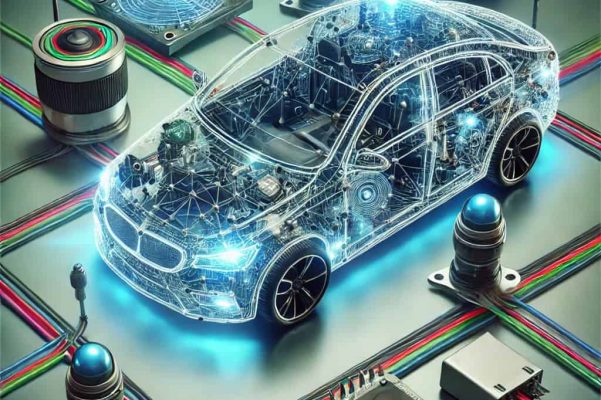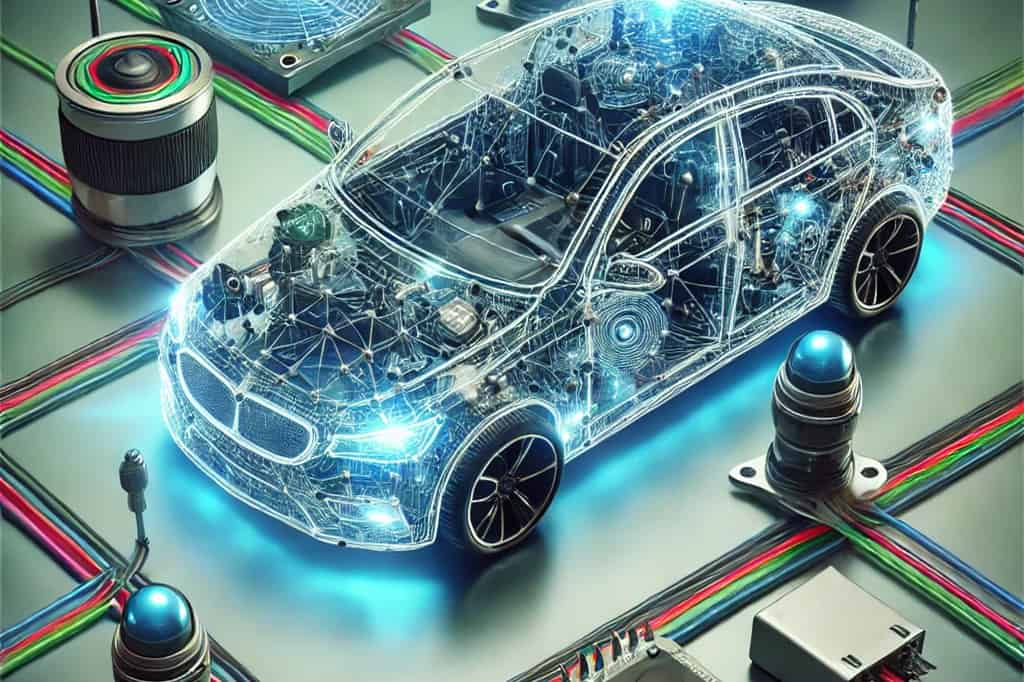As technology rapidly evolves, autonomous driving has become one of the most prominent trends in the automotive industry. This innovation not only changes how we envision future transportation but also has a profound impact on vehicle manufacturing, particularly in the design and production of core components such as the automotive wiring harness. As the “nervous system” of a vehicle’s electrical system, the wiring harness connects various electronic components, transmitting both data and power. Autonomous driving places new demands on the automotive wiring harness, presenting both challenges and opportunities for the industry.

1. How Autonomous Driving Changes the Demand for Wiring Harnesses
The primary function of an automotive wiring harness is to provide power to electronic devices inside and outside the vehicle and to transmit signals to corresponding components. In traditional vehicles, the wiring harness system was relatively simple. However, with the introduction of autonomous driving technology, the number of sensors, radars, cameras, and high-performance computing units required has increased significantly, making the wiring system much more complex.
1.1 Increased Data Transmission Requirements
Autonomous vehicles rely on numerous sensors and electronic control units (ECUs) that need both stable power supplies and efficient data transmission networks. This means that modern automotive wiring harnesses not only have to handle power distribution but must also support high-speed data communication. To achieve this, many vehicles are now incorporating high-speed transmission lines, such as Ethernet cables, which place higher demands on wiring harness design and manufacturing.
1.2 Complex Wiring Harness Topology
Autonomous driving systems collect real-time data from multiple sensors, such as radar for distance detection, cameras for image processing, and LiDAR for scanning surroundings. This information is transmitted via the automotive wiring harness to the vehicle’s onboard computer for processing. Due to the large number of sensors and devices involved, the topology of the wiring harness becomes more complex, involving more branches and connection points. Traditional wiring designs are insufficient to meet these needs, requiring new designs and wiring schemes.
1.3 Centralized Data Processing
As autonomous driving technology evolves, the data processing within vehicles is becoming more centralized. All the data from sensors and control units are transmitted to a central processing unit, which then makes driving decisions. This change means that the automotive wiring harness requires a more efficient wiring structure capable of supporting large-scale data transmission. Furthermore, the vehicle’s internal control and communication systems rely more heavily on advanced wiring harnesses to ensure real-time response and reliability.
2. Technological Innovations in the Wiring Harness Industry
Autonomous driving not only introduces more complex demands but also pushes electronic wiring harness manufacturers to innovate in materials, design, and production technology to meet these new challenges.
2.1 Use of High-Speed Transmission Cables
To meet the high-speed data transmission demands of autonomous driving systems, traditional power transmission cables are no longer sufficient. Wiring harness manufacturers are introducing Ethernet cables and fiber optics to enable faster data transmission, ensuring stable operation for autonomous driving systems. At the same time, manufacturers must ensure that these cables remain stable in the vehicle’s complex environment, avoiding signal interference and data loss.
2.2 Lightweight Design
Autonomous vehicles are equipped with numerous electronic devices and sensors, which increases the overall weight of the vehicle. To address this issue, automotive wiring harness manufacturers are actively developing lightweight wiring harness solutions. By using new conductive materials, such as aluminum alloys instead of traditional copper wires, and optimizing the design of the harness, manufacturers can reduce the weight of the wiring system without compromising transmission efficiency. This not only improves vehicle energy efficiency but also extends the driving range of electric vehicles.
2.3 Modular and Standardized Design
Given the complexity of autonomous driving systems, modular wiring harness design is becoming a trend in the industry. By dividing the wiring harness into several functional modules, manufacturers can simplify the design and production process, improving production efficiency. In addition, modular wiring harnesses simplify vehicle maintenance and upgrades, making it easier to replace parts of the system. At the same time, standardization in wiring harness design is essential, as it helps improve production efficiency and ensures compatibility across different vehicle brands and models.
2.4 Self-Diagnostic and Repair Capabilities
To enhance safety and reliability, manufacturers are developing smart wiring harnesses with self-diagnostic capabilities. These harnesses can monitor their own status in real-time, detecting any potential issues such as short circuits, broken wires, or other faults. Once a problem is identified, the system can send an alert immediately, and in some cases, even automatically repair minor faults. This intelligent wiring technology will greatly enhance the safety and stability of autonomous vehicles.
3. Challenges and Opportunities
While autonomous driving brings significant opportunities to the automotive wiring harness industry, it also presents several challenges.
3.1 Cost Control
The increased complexity and diversity of automotive wiring harness requirements for autonomous driving systems have driven up the cost of producing these high-performance harnesses. Manufacturers need to find a balance between performance and cost, ensuring that the harnesses meet the high demands of autonomous driving technology while remaining cost-effective to maintain competitiveness in the market.
3.2 Safety and Durability
Autonomous vehicles handle large amounts of complex real-time data, and the transmission of this data must be secure and reliable. If the wiring harness fails, it could lead to loss of vehicle control or functionality. Therefore, the safety and durability of the harnesses are critical. Electronic wiring harness manufacturers must develop more durable, interference-resistant materials to ensure the reliability of the wiring in extreme conditions.
3.3 Standardization and Interoperability
As autonomous driving technology continues to advance, the automotive wiring harness industry must address the differences in technical standards among various manufacturers. Creating unified industry standards is essential to ensure compatibility between different brands and models, simplifying production processes and increasing consumer trust.
4. Future Outlook
As autonomous driving technology continues to evolve, the automotive wiring harness industry will see even more innovation and transformation. In the future, wiring systems will become more intelligent and modular, with self-diagnostic and repair capabilities, and they will support faster data transmission. As the automotive industry moves toward electrification, intelligence, and automation, the wiring harness will continue to be the core component of the vehicle’s electrical system, playing an irreplaceable role.
At the same time, electronic wiring harness manufacturers will focus on technological innovation and cost optimization, offering lighter, more reliable products to meet the growing market demand. For the wiring harness industry, autonomous driving is not just a challenge, but an important opportunity to shape the future.
Conclusion
The rise of autonomous driving is significantly reshaping the automotive wiring harness industry. In response to this technological revolution, electronic wiring harness manufacturers, such as Konnra, must constantly innovate to meet the growing technical demands and shifting market dynamics. From high-speed transmission cables to lightweight designs, as well as modular and intelligent systems, the automotive wiring harness industry is evolving towards a more advanced and intelligent future.
As autonomous driving technology matures and becomes more widely adopted, the wiring harness will remain a crucial component in vehicles. For manufacturers like Konnra and consumers alike, understanding and adapting to these changes will be essential in embracing the future of mobility.










